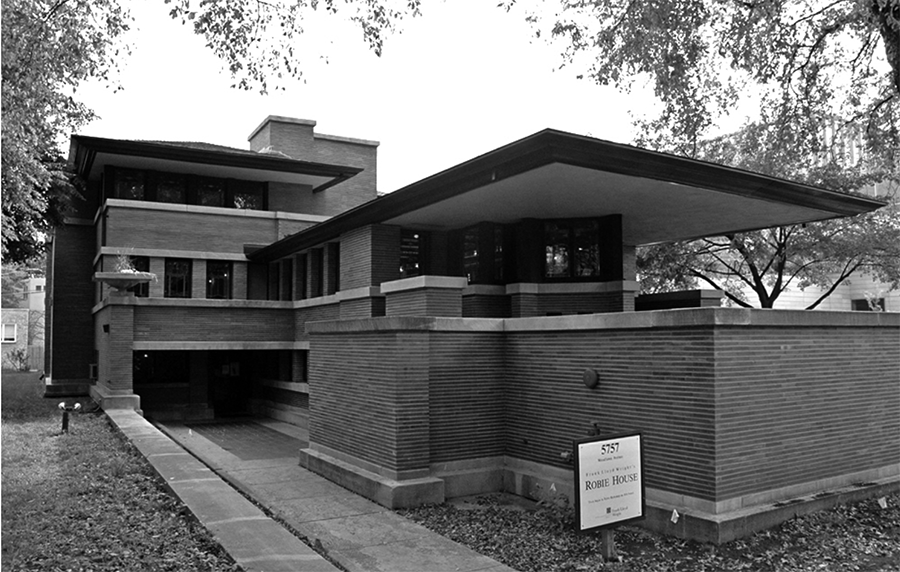Staying with family friends in Chicago back in the 70s, I had an early introduction to a couple of the world’s great architects. My host was an architect and a lecturer at Northwestern University and the Windy City was for him a giant playground of structural delight. Being a callow youth, he decided my education was incomplete without a tour of the great buildings, accompanied by an historical overview of the skyscraper. So it was that on a busy morning in only a few blocks of the city he unravelled the mystery of these iconic structures, ones we now pass with barely a glance; the early brownstone buildings with an almost classical elegance of form and scale; the shift in materials that allowed things to go higher, be lighter and brighter; the removal of the innards so that internal space and light was created with soaring atriums; hanging structures off internal frames, so that it appeared that buildings were almost floating; the simplicity and splendour of well-balanced design and function in the giants alongside the lakeshore.
His enthusiasm and insight was infectious and suddenly good architecture (and bad) became rather more intriguing and obvious. But it was Lloyd Wright and van der Rohe that I think he really admired. He had an original pair of Barcelona chairs designed by Mies and sitting in them he would expound on the value of Modernism and on Wright’s brilliance in innovation and use of the landscape, how he combined living spaces and openness with the place they sat in. One day we visited his old professor, now retired, north of Chicago, in a house that to a suburban dwelling Home Counties lad was simply breathtaking. My memory is of a place which had no external walls at all, simply beautiful glass, so that the light and the landscape seemed to flow in uninterrupted. Inside there were sliding panels and a few concrete walls, but all of absolute minimalist structural design. Again the emphasis was how spaces flowed and moved, and could be altered in configuration. He unrolled a huge and beautiful blueprint, his plan for the city. “And here,” he pointed at the sheet, “is where it all starts”: his own house and grounds! Around were mature hardwood trees. He explained that when he came out at the weekends when he was building his home, his children would always poke seeds into the ground. Forty years on and all was a sylvan glade barely 40 minutes from downtown. As a fusion of idealism, practicality, vision, energy, planning and sheer hutzpah it took some beating. It had a wonderful humanism to it all.
The Malaysian government is partway through a massive and total reconfiguration of this part of the world
The use of concrete, glass and steel have become almost mandatory for modern buildings and where I am is no exception. One has to admire the extraordinary scale of the endeavour that has/is going on here and there are echoes and the influence, if one looks carefully, of Wright and van der Rohe all around. The Malaysian government is partway through a massive and total reconfiguration of this part of the world, as you are probably be aware. Pushing out into the Straits, perhaps provocatively full face on to its rival Singapore, is an artificial peninsula. The newly created land covers about 20+ square kilometres and is part of the Special Economic Zone. Forest City is planned to provide accommodation and facilities for up to 700,000, but a recent change in government and policy means that foreigners will not be allowed to buy there. Reports in the New Straits Times that the first stage was 70% owned by Chinese nationals caused concern. Development both here and in many other sites along the coast has stalled. Danga Bay, just further along the coast, also has ambitious plans for grandeur, but the hoardings around the empty sites look as if they have been there for some time.
What would our Americans make of the local Legoland, I wonder? It perhaps is not designed to flow with the landscape, more to arrest the eye with its garish ‘building block’ structure, but in its faux childlike appearance it is actually quite a visually stunning piece of work. The proportions, colouring and style work well together, although it currently has an air of a giant abandoned playpen. Wright revealed that as a child, “For several years [he] sat at the little kindergarten table-top…and played…with the cube, the sphere and the triangle… These primary forms and figures were the secret of all effects…which were ever got into the architecture of the world…these smooth wooden maple blocks…” In a moment of serendipity I discovered that both architects’ signature houses – see below – are available as Lego sets!
Here in the estate the look is one of horizontal lines, lots of glass, lots of internal space and very few internal walls, echoing perhaps the Farnsworth House of Rohe. Porches thrust out in classic Lloyd Wright fashion – there are Porsches too, but they tend to be underneath. The ceilings are 20 feet high, all is airiness and light. We don’t have the cascading waterfalls, but there is a definite attempt at stepped levels and interesting lines akin to his Robie House. Development, however, has also ground to a halt here, with one large section of the estate incomplete, creating ironically the ultimate in minimalist Bauhaus living with just concrete floors, internal walls and space – lots and lots of open space. Vegetation now drapes the insides of these shells in an interior-fashion designer’s eco-dream. Perhaps they are leaving them as a tribute to the great founders of their style! Frank Lloyd Wright and Mies van der Rohe in Malaysia indeed.
Frank and Mies in Inspiration Park
Frank Lloyd Wright, Mies van der Rohe, geniuses drew
Out of the land inspiration that grew
From prairie, wood, history, form and function
Without compromise; re-fusing the home,
Office, the lives within. For de Rohe
It was always ‘less is more’: Farnsworth House.
Wright’s extension of lines, simplicity
His trademark elegant design: Robie.
For both, space, light, openness, air, vision
Were sacrosanct, blueprints for their mission.
Here plain unfinished concrete floors protrude,
Horizontal tributes; no windows, doors.
Within, walls float draped, graceful greenery,
Without, all is cascading space, space, space.








